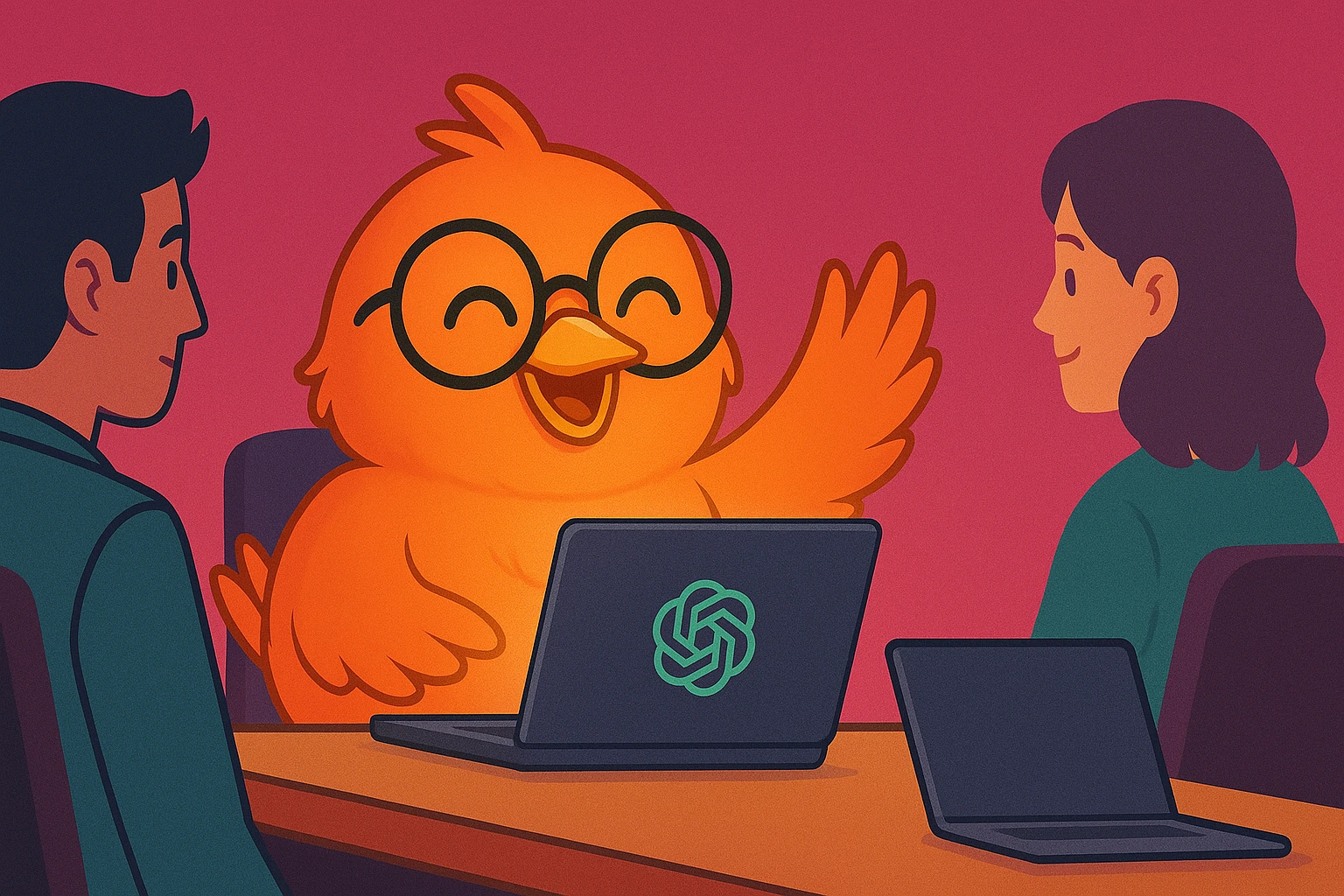Chat GPT 5 landed on August 7. People have huge expectations, on social media, many say it doesn’t feel like the “magical leap” they were waiting for.
And yet, if you look closer, GPT-5 does bring some serious upgrades: it’s quicker on its feet, sharper with logic, and more flexible with creative tasks. It can even juggle text, images, and voice in ways that make it feel less like a tool and more like a teammate.
- Technical Overview of Chat GPT 5
- Prompting in ChatGPT-5 Styles That Work Best
- 5 Key Features: From Coding to Custom Agents
- Before You Rely on GPT 5, Know These Limitations
- Is ChatGPT-5 Worth It? The Honest Pros and Cons
- These 5 Tips and Tricks Will Help You Get the Best Answers
- 5 Common Mistakes You should Avoid while Using ChatGPT
- What’s Next? The Future of ChatGPT and AI Tools
- FAQs
- 1. Do I need technical knowledge to use ChatGPT?
- 2. What are the best ways to get quality answers from ChatGPT?
- 3. Can ChatGPT help with social media content?
- 4. Is the free version of ChatGPT enough for professionals?
- 5. Can ChatGPT replace human creativity or thinking?
- Go Above and Beyond with Chat GPT 5
In this blog, we’ll cut through the hype and the hate. You’ll see exactly what makes GPT-5 different from earlier versions, where it still struggles, and how you can actually use it to get better results in real work.
From key features and prompt styles to sector-wise examples, this guide will help you decide if GPT-5 is truly worth the buzz.
Technical Overview of Chat GPT 5
After using it personally for a couple of days and going through all the social media posts and comments here is our overview about Chat GPT 5.
1. Architecture Improvements
GPT-5 does come with a bigger and more optimized architecture than GPT 4o, but users online don’t see it as a night-and-day difference.
The model is designed for smarter scaling, meaning it can handle complex tasks more efficiently without just relying on size. This helps with smoother workflows and supports multimodal features like text, images, and voice.
Still, many argue these improvements feel more “under the hood” than something game-changing in daily use.
2. Not the Giant Leap People Hoped For
Across Reddit, Twitter/X, and online forums, users are saying GPT 5 feels more like GPT 4.5 than a true revolution.
Many expected a magical leap, something that would redefine how we use AI. Instead, what they got is a smoother, faster version of what already existed.
It’s an improvement, yes, but not the jaw-dropping upgrade most people were anticipating when “GPT-5” was first teased.
3. Faster and Better with Context
One area where GPT-5 shines is speed and context management. Responses are quicker, less laggy, and conversations flow better without losing track after long exchanges.
This makes it more reliable for research, strategy, or brainstorming. However, for casual users asking simple one-line questions, the boost doesn’t always feel noticeable.
For them, GPT-5 looks like “more of the same,” while heavy users are the ones benefiting most from this upgrade.
4. Reasoning Is Improved, but Not Perfect
Developers and advanced users highlight that GPT 5 has noticeably stronger reasoning abilities compared to GPT 4. It handles logic, math, and coding tasks with more consistency and can follow multi-step instructions better.
Still, it’s not flawless, hallucinations, math slips, and overconfident wrong answers are still part of the package.
Critics argue OpenAI overpromised on “smarter reasoning,” pointing out that while better, it hasn’t solved the model’s biggest weaknesses.
5. Memory Features: Helpful but Divisive
One of GPT 5’s headline features is memory. It can remember your style, preferences, and even past projects across sessions, making it feel more personal and consistent.
Businesses love the idea because it keeps brand voice steady and reduces repetitive setup. But reactions are mixed: some users find it buggy or half-finished, while others worry about privacy.
The memory system is powerful in theory, but in practice, it doesn’t always deliver as smoothly as promised.
6. Multimodality: Impressive but Rarely Used
Multimodality is one of GPT 5’s flashiest upgrades. It can handle text, images, voice, and even code in a single conversation.
That means you can upload a chart, get an explanation, and turn it into a voice script instantly. Technically impressive, yes, but most users admit they don’t use this daily.
For now, it feels more like a “nice to have” than a must-have, with real value showing up mostly for professionals and creators.
7. Overall Sentiment: Good, but Overhyped
The general mood online is clear: GPT 5 is an upgrade, but not the revolution people expected. It’s smoother, faster, and smarter, but still has flaws.
Some users even say alternatives like Claude, Gemini, or Perplexity feel fresher or more useful for certain tasks.
In the end, GPT-5 is seen as a solid step forward but one wrapped in marketing hype that oversold what it could realistically deliver.\
Prompting in ChatGPT-5 Styles That Work Best
1. Image Prompt – Infographic
Prompt:
“Create a clean infographic explaining the pros and cons of ChatGPT-5. Use a modern flat design with icons, two-column layout, bold headings, and contrasting colors for pros (green) vs cons (red).”
Result:
2. Video Prompt – Explainer Animation
Prompt:
“Create a 60-second animated explainer video showing ChatGPT-5’s new features. Scene 1: AI brain lighting up. Scene 2: split-screen of writing, coding, and research tasks. Scene 3: voice and image integration. End with text ‘GPT-5: Faster. Smarter. More Connected.’ Style: smooth motion graphics, upbeat background music.”
Result:
3. Image Prompt – Blog Feature Image
Prompt:
“Generate a futuristic digital artwork of ChatGPT-5 as a glowing AI brain, connected by neon circuits to text, images, and code symbols. Background: dark gradient with subtle light streaks. Style: cinematic, 8K, hyper-realistic.”
Result:
4. Video Prompt – Social Media Reel
Prompt:
“Ultra-realistic digital ad poster featuring the Reddit logo (Snoo inside orange square) surrounded by frosty ice cubes. Logo edges look frosted, background cool icy blue. Text: ‘Dive into Reddit’ on top, ‘Find the community where you belong’ at bottom. Sharp, eye-catching, professional tech/app promo style.”
Result:
5. Image Prompt – Meme/Marketing Post
Prompt:
“Design a funny meme poster comparing GPT-4 vs GPT-5. Left side: GPT-4 shown as a reliable bicycle. Right side: GPT-5 as a sleek electric bike with neon lights. Caption: ‘It’s faster, but still gets you to the same place.’ Style: bold, meme-friendly, colorful.”
Result:
5 Key Features: From Coding to Custom Agents
i. Smarter Long-Form Writing
GPT 5 is far better at producing long-form content like essays, research papers, and creative writing. It maintains flow and context across thousands of words, making it more reliable for projects that demand structure.
Writers, students, and researchers benefit most, as it reduces the need for constant editing or re-prompting. Still, it’s not flawless fact-checking is still required, and some say it occasionally drifts off-topic in very complex pieces.
ii. Advanced Coding Assistance
For developers, GPT 5 offers stronger coding support. It can debug issues, generate more production-ready code, and even explain why errors happen in plain language.
Multi-step reasoning improvements mean it handles complex coding requests better than GPT 4.
That said, programmers online note it’s not perfect, some outputs still require cleanup or testing. But as a coding co-pilot, GPT 5 is far closer to being a practical day-to-day assistant.
iii. Improved Factual Accuracy
One of GPT-5’s biggest promises is fewer hallucinations and stronger grounding in fact. It’s better at sticking to real data, especially when handling technical or research-heavy topics.
This improvement reduces the risk of confidently wrong answers, though errors still happen. Many users appreciate the progress but remain cautious, saying fact-checking is still non-negotiable.
In short, GPT-5 is more trustworthy, but it hasn’t completely solved the accuracy problem yet.
iv. Custom Agent Creation
A standout feature of GPT-5 is the ability to build custom agents tailored to personal or business needs. You can create an AI teammate that remembers workflows, adapts to brand tone, or handles specific tasks.
For businesses, this means creating assistants trained on internal documents or customer FAQs.
Users find this powerful, though setup can feel tricky at first. It’s a step toward making AI feel truly personal and business-ready.
v. Integration with External Tools
GPT-5 also integrates more smoothly with external tools like search engines, productivity apps, and APIs. This means you can connect it directly to workflows, whether for pulling live data, updating tasks, or generating reports.
Professionals see this as a major win, turning GPT-5 into more than just a chatbot. However, some users worry about reliability and security when connecting external systems. Still, this integration makes GPT-5 far more practical in real work.
Before You Rely on GPT 5, Know These Limitations
1. Hallucination Issue
Even with improvements, GPT-5 still struggles with “hallucinations” confidently producing wrong or made-up information. This can be dangerous in academic, legal, or medical contexts where accuracy is critical.
While the model is better at grounding itself in real data than GPT 4, fact-checking remains a must. Users often share frustration online about trusting answers that sound polished but turn out false, showing this issue hasn’t been fully solved yet.
2. Over-Politeness and Lack of Directness
GPT-5 often avoids bold claims, leaning into overly polite or cautious responses. This can make its answers feel vague or non-committal when users need strong, clear guidance.
For casual chats, this tone is fine, but for professionals who want decisive advice or firm statements, it can be frustrating.
Some critics online call this “AI hedging,” where the model dances around direct answers to avoid being wrong or offensive.
3. Context Window Limits
While GPT-5 has a larger context window than earlier versions, it’s still not infinite. Feed it massive documents or hours of transcripts, and it may lose track or forget key details.
This can break workflows that rely on long, continuous inputs, like research or large project planning.
Users praise the upgrade over GPT-4 but point out that expectations were higher, many hoped GPT-5 could handle “everything at once,” which it still can’t.
4. Dependency on Prompts
The quality of GPT-5’s output still depends heavily on how well the user writes prompts. A vague request produces weak answers, while a detailed one gets better results.
This puts the burden on users to learn prompt-writing skills, which not everyone finds intuitive. Although GPT-5 is more forgiving than GPT-4, the “garbage in, garbage out” rule still applies, leading to mixed results for beginners versus experienced prompt engineers.
5. Ethical and Privacy Concerns
GPT-5’s expanded features raise big questions about ethics and privacy. Memory and external integrations mean the model can store or access sensitive information, making users worry about data misuse.
Bias in responses is another concern, while reduced, it hasn’t disappeared. Critics also highlight that businesses using GPT-5 must consider how AI decisions might impact fairness, transparency, and accountability.
In short, GPT 5 is powerful, but it’s not free from ethical challenges.
Is ChatGPT-5 Worth It? The Honest Pros and Cons
Advantages
Pro #1 Extremely Versatile
GPT-5 handles writing, coding, research, marketing, and storytelling making it a true all-in-one assistant.
Pro #2 Faster and More Human-Like
Responses are quicker, smoother, and feel less robotic, ideal for natural conversations and creative work.
Pro #3 Smarter Reasoning + Multi-Language
Better at logic, coding, and analysis, while supporting more languages for global use.
Pro #4 Handles Multiple Tasks
Keeps context across long sessions, managing several tasks in one conversation without losing track.
Drawbacks
Con #1 Factual Mistakes Remain
Still generates confident but wrong answers, fact-checking is essential.
Con #2 Prompt Dependent
Weak prompts lead to weak results, making prompt skill key to success.
Con #3 Memory Not Perfect
Can forget or misinterpret details in longer chats, hurting consistency.
Con #4 High API Costs
Pricing is steep for businesses, limiting large-scale or team-wide use.
These 5 Tips and Tricks Will Help You Get the Best Answers
Getting good output from ChatGPT depends on how you communicate with it. If your prompt is excellent, then your answer will be outstanding.
I Add Context
Tell ChatGPT who you are and what you need. The more background you give, the more useful the answer. Think of it as briefing a teammate. For example, say “I’m a marketing manager targeting health-conscious Gen Z users,” and you’ll get better ideas.
II. Use roles for better replies
Say, “Act like a brand consultant” or “Pretend you’re a nutritionist.” It will shape the tone and content to match that role. This boosts relevance. You’ll get more tailored responses, especially if you’re asking for technical or industry-specific content.
III. Ask for step-by-step help
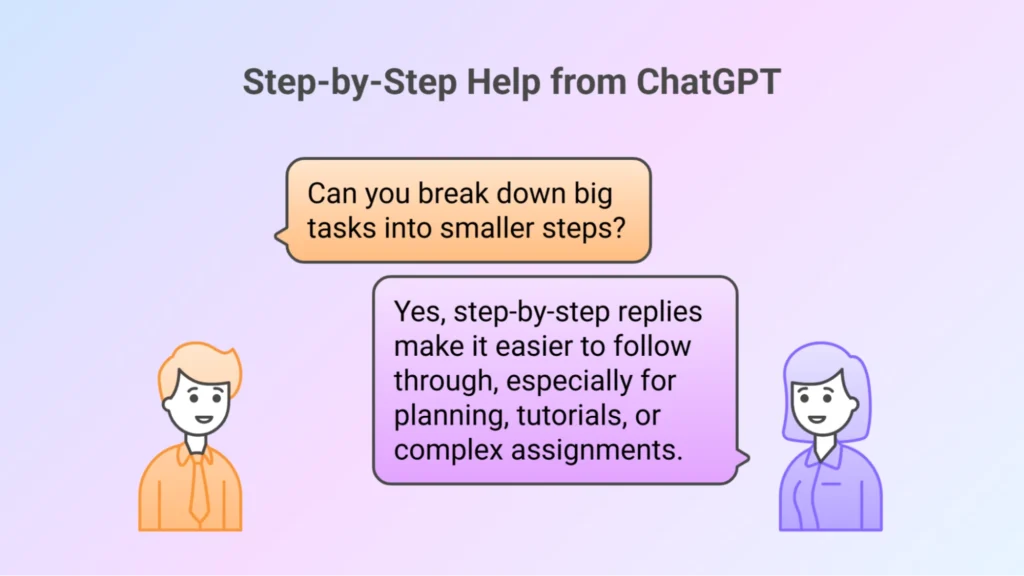
For big tasks, ask it to break things down. Step-by-step replies make it easier to follow through. It works great for planning or tutorials. This is especially helpful for complex assignments like writing business plans or learning new software.
IV. Edit Together
Ask for a draft, then revise it together. You can say “make it shorter” or “add an example.” Treat it like a co-writer. This collaboration-style approach helps you refine content efficiently.
V. Customize Replies for Customer Service Use
If you run a business, ask ChatGPT to write polite, on-brand responses to FAQs or complaints. You can even include your tone friendly, firm, or professional, helping you maintain consistency while saving time.
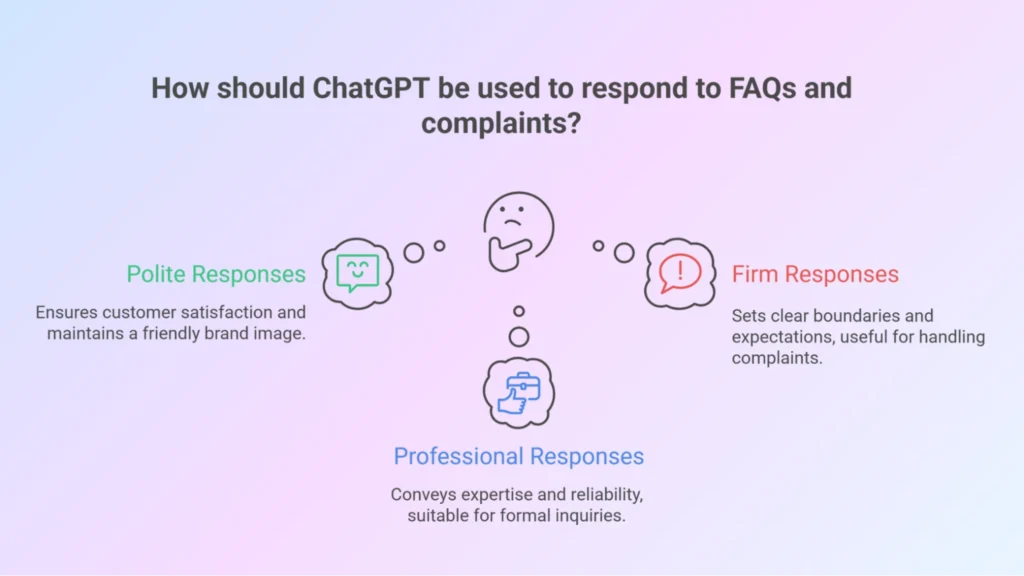
Simply, tweak the prompt and save the replies for future use.
5 Common Mistakes You should Avoid while Using ChatGPT
Even advanced users can make errors with ChatGPT, so you have to avoid these mistakes at all costs
1. Skipping Fact-Checks
ChatGPT can sound confident, even when it’s wrong. Always verify stats, names, or sensitive info. It’s a tool, not a final source. A Stanford study found that ChatGPT made factual errors in 52% of medical queries. Fact-checking is a must.
So, always check the stats, numbered info, data, and other real life events before putting them in your content.
2. Giving Weak Prompts
If you’re too vague, the results will disappoint. Don’t say “write a pitch deck”; give details, goals, and audience.
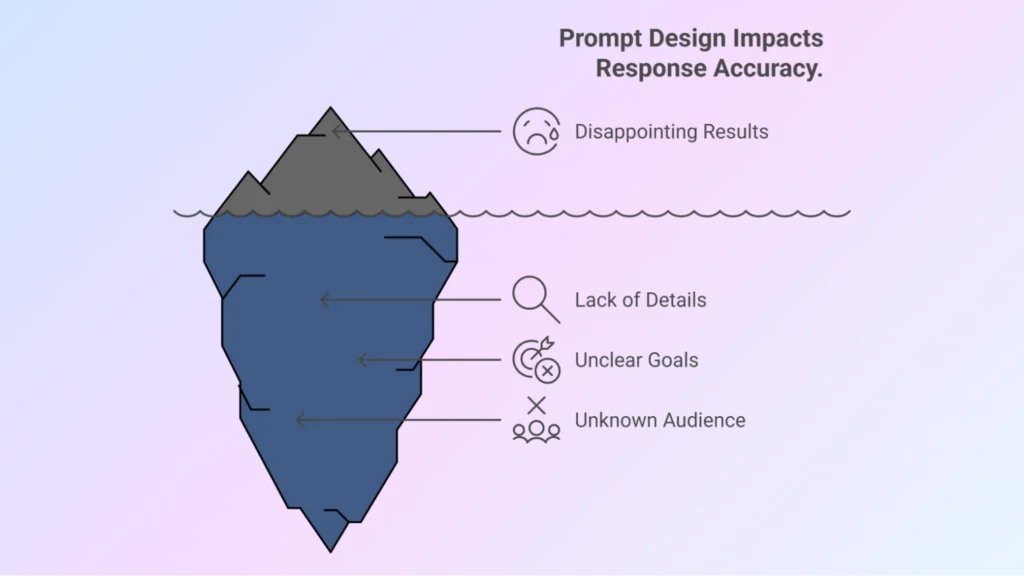
A journal by ResearchGate in Computer Science and Engineering reports that well-designed prompts can increase response accuracy from 85% – 98% across various contexts.
3. Not Generating CTA Variations for A/B Testing
Want to test which Call-To-Action (CTA) performs better: “Sign up now” vs. “Start your free trial”? You can ask ChatGPT to generate 10 alternative CTA variations in seconds.
So, Beyond just wording, you can experiment with CTA placement, color, size, and microcopy, as these factors influence click-through rates and user behavior.
Using ChatGPT, you can quickly produce multiple versions, analyze which resonate best with your audience, and optimize for engagement, sign-ups, or purchases.
4. Ignoring Tone or Brand Voice
If you don’t ask for a specific tone, you’ll often get a generic response. Be clear: do you want professional, friendly, bold, or playful?
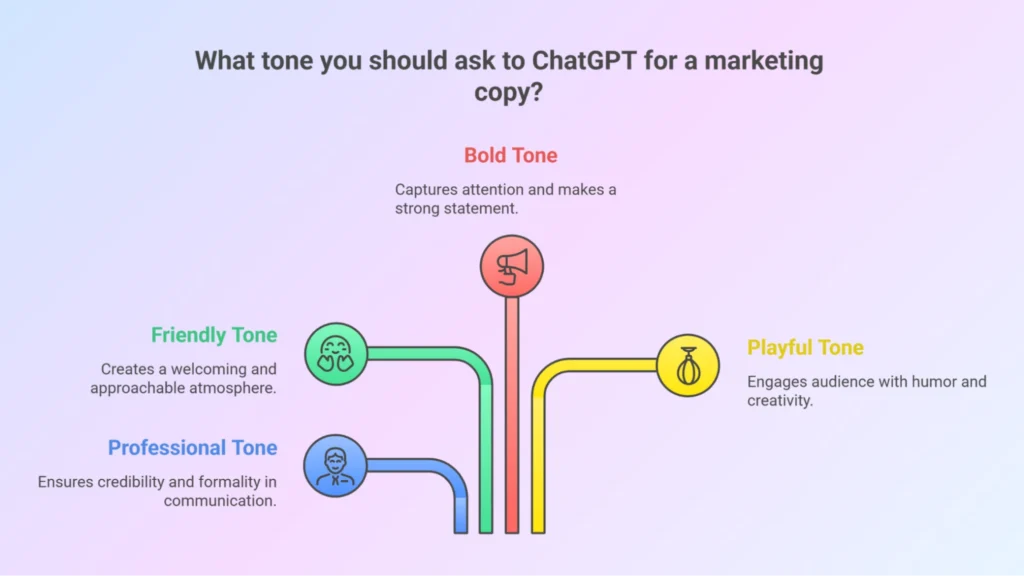
You can add “use a conversational tone” or “match our brand voice” to keep consistency across marketing copy.
5. Skipping Follow-Up Prompts
Don’t settle for the first draft. Ask follow-ups like “Can you shorten this?” or “Make it more persuasive.” In OpenAI user behavior data, engagement doubled when users asked at least 2 follow-up prompts after the first output.
The name is ChatGPT for a reason, You have to chat with it until you get the best result. Or you can create super massive prompt with all the important instructions and information, like this one –
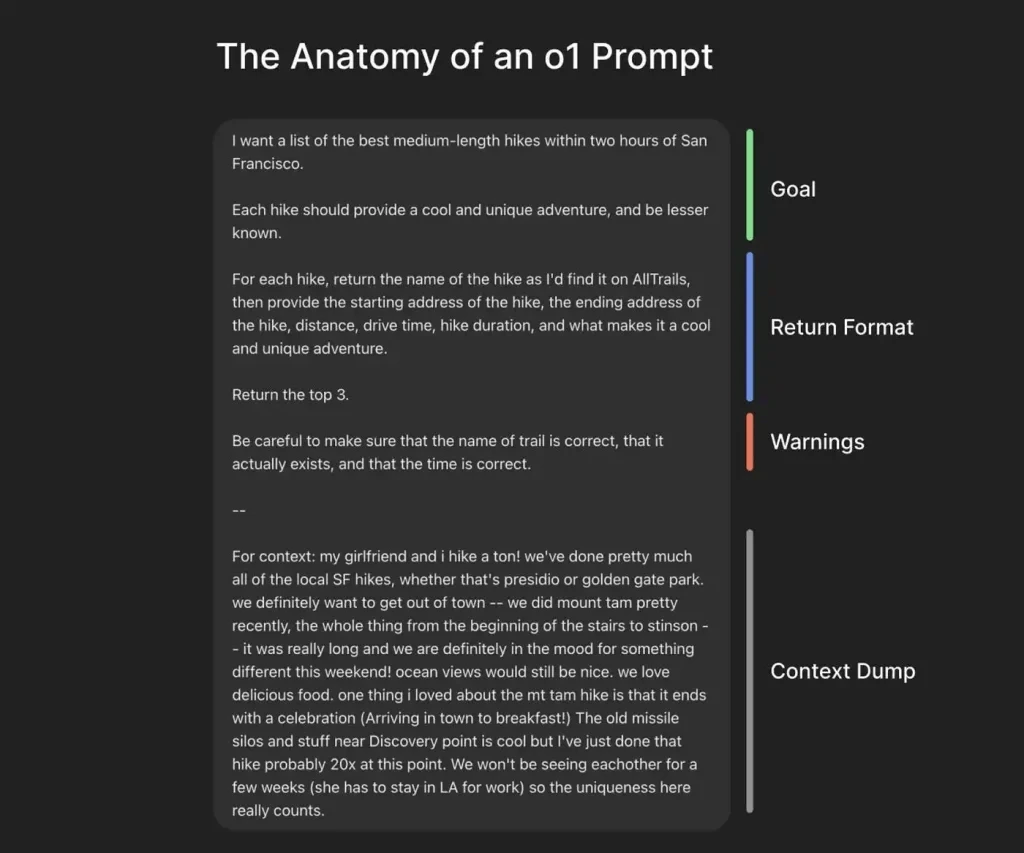
Source – ContentGrip
What’s Next? The Future of ChatGPT and AI Tools
The AI world is evolving rapidly, bringing smarter tools and fully automated workflows just around the corner.
+ Use Custom GPTs for Your Business
You can now create a personalized version of ChatGPT, trained on your company’s unique processes, documents, and brand voice. This allows you to have a dedicated AI teammate that aligns perfectly with your workflows and communication style.
According to OpenAI, over a Million custom GPTs were created by early 2025 and the number keeps growing.
+ AI Agents Doing Tasks
AI agents are evolving to perform tasks proactively, rather than waiting for user prompts. They can initiate, execute, and complete actions across multiple platforms autonomously.
In the near future, you will be able to instruct an AI agent with commands such as “Plan my product launch” or “Manage my inbox,” and the tasks will be handled automatically in the background.
IBM’s early experiments indicate that AI agents with real-time API access can reduce project completion time by up to 40%, which sounds great for productivity enhancement and workflow automation.
+ Prompt Engineering Is a New Skill
Crafting effective prompts is rapidly emerging as a specialized skill, akin to SEO or copywriting. This competency is increasingly recognized in job listings on platforms like LinkedIn and Indeed.
According to Gartner’s 2024 report, “AI’s Impact on the Employee Experience,” by 2026, over 70% of knowledge workers are projected to utilize prompt-based AI tools daily, with proficiency in prompt engineering becoming a significant hiring criterion.
FAQs
Go Above and Beyond with Chat GPT 5
Compared to most AI Chatbots such as Gemini, Perplexity, Grok, Lama, DeepSeek, ChatGPT just goes above and beyond with every task you appoint. Plus, the new version has so much potential of building pretty much anything directly on-screen!
You can draft content, generate visuals, or even design workflows seamlessly. Its versatility, combined with intuitive interaction, makes it a powerful co-pilot for professionals and creators alike.
With continuous updates, ChatGPT adapts to new challenges, ensuring your projects stay ahead of the curve.
